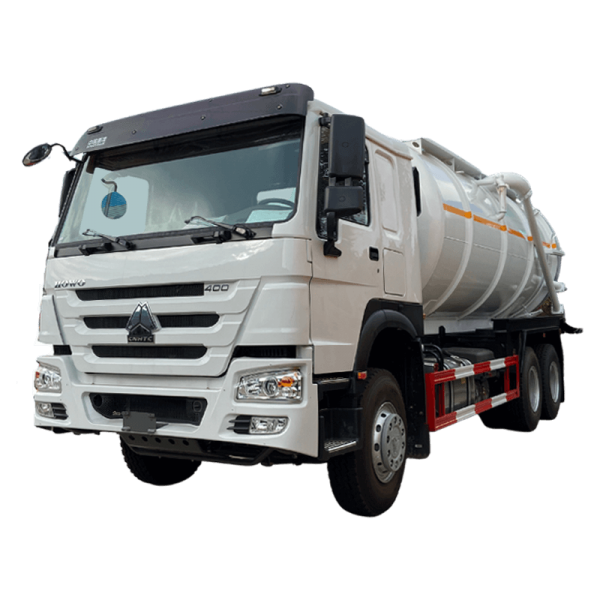Work Truck
In today's rapidly growing urban landscapes, waste management has become a critical issue that demands innovative solutions. Garbage trucks play a crucial role in this process by collecting and transporting waste from residential, commercial, and industrial areas to disposal sites. The evolution of garbage truck disposal methods has been instrumental in improving efficiency, reducing environmental impact, and promoting sustainable waste management practices. This comprehensive guide explores the history, technology, challenges, and future prospects of garbage truck disposal.
History of Garbage Truck Disposal
The concept of garbage collection dates back to ancient civilizations, where waste was often dumped in designated areas outside city walls. However, organized collection and disposal systems only began to emerge in the 19th century with the advent of industrialization and urbanization. The first mechanized garbage collection vehicles appeared in the early 20th century, marking the beginning of modern waste management practices.
The evolution of garbage trucks has been marked by significant technological advancements and innovations. Early garbage trucks were simple, open-bed vehicles that required manual labor for loading and unloading waste. As the demand for more efficient waste collection grew, specialized vehicles with compactors, hydraulic lift systems, and automated loading mechanisms were developed to streamline the process.
Types of Garbage Trucks
Garbage trucks come in various types and configurations, each designed for specific waste collection needs. The most common types of garbage trucks include:
1. Rear Loaders: Rear-loading garbage trucks are equipped with a hydraulic compactor at the rear of the vehicle. Waste is loaded into the hopper at the back of the truck, compacted, and then deposited into the storage compartment. Rear loaders are commonly used for residential waste collection.
2. Front Loaders: Front-loading garbage trucks feature a hydraulic lifter at the front of the vehicle that picks up and empties dumpsters into the storage compartment. Front loaders are ideal for collecting waste from commercial and industrial sites.
3. Side Loaders: Side-loading garbage trucks have a mechanical arm on the side of the vehicle that picks up and empties waste containers into the storage compartment. Side loaders are commonly used for curbside collection in residential areas.
4. Roll-Off Trucks: Roll-off trucks are designed to transport large open containers, known as roll-off containers, to and from construction sites, industrial facilities, and waste transfer stations. These trucks are versatile and can handle a wide range of waste materials.
Challenges in Garbage Truck Disposal
Despite the advancements in waste management technology, garbage truck disposal still faces several challenges that need to be addressed:
1. Environmental Impact: Garbage trucks contribute to air and noise pollution, as well as greenhouse gas emissions, through their operation. Implementing cleaner fuel technologies, such as electric or natural gas-powered trucks, can help reduce the environmental impact of waste collection vehicles.
2. Waste Sorting and Recycling: Garbage trucks often collect mixed waste streams, making it challenging to separate recyclable materials from general waste. Integrated waste sorting technologies and education programs can help improve recycling rates and reduce the amount of waste sent to landfills.
3. Infrastructure and Logistics: Inefficient routing, inadequate storage facilities, and poor maintenance of garbage trucks can result in delays, increased costs, and reduced service quality. Investing in modern fleet management systems, maintenance protocols, and infrastructure upgrades can enhance the efficiency of waste collection operations.
Future Prospects of Garbage Truck Disposal
As cities continue to grow and urbanize, the demand for sustainable waste management solutions will increase. The future of garbage truck disposal is likely to be shaped by technological innovations, regulatory changes, and public awareness campaigns. Some key trends and developments to watch for include:
1. Electric and Autonomous Vehicles: The shift towards electric and autonomous garbage trucks is gaining momentum as cities aim to reduce emissions and improve operational efficiency. Electric vehicles offer a cleaner alternative to traditional diesel trucks, while autonomous technologies can enhance safety and productivity in waste collection operations.
2. Data Analytics and Smart Routing: Leveraging data analytics and smart routing algorithms can help optimize garbage truck routes, reduce fuel consumption, and minimize collection times. Real-time monitoring of waste bins, traffic conditions, and vehicle performance can enable more efficient and sustainable waste management practices.

3. Circular Economy Initiatives: Embracing the principles of the circular economy, such as resource recovery, product reuse, and sustainable packaging, can help minimize waste generation and promote a more sustainable waste management system. Garbage trucks can play a crucial role in facilitating the collection and processing of recyclable materials to support circular economy initiatives.
Conclusion
Garbage truck disposal plays a vital role in waste management systems worldwide, ensuring the timely collection and transportation of waste to designated disposal sites. The evolution of garbage trucks has led to significant improvements in efficiency, sustainability, and environmental impact reduction. Addressing challenges such as environmental pollution, waste sorting, and infrastructure constraints will be key to advancing the future of garbage truck disposal. By embracing technological innovations, regulatory reforms, and public engagement, cities can create more sustainable and resilient waste management systems for future generations.
